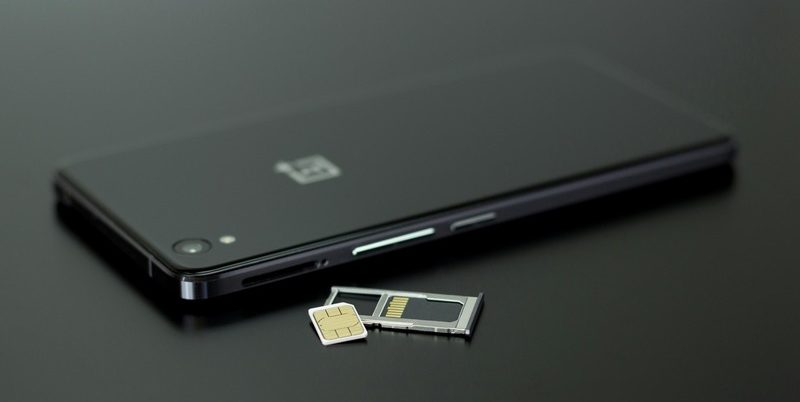Chances are, even if you’re not into tech, you’ve heard of SIM cards.
These are the small cards in your phone.
They help you connect to your carrier’s network and use your plan. Now, there’s a new player in town – the eSIM. An eSIM is a digital version of the normal SIM card. It identifies your device online to connect to the network.
You can program an eSIM from anywhere using the software. It already comes in many new smartphones.
This means you don’t have to get a new one if you change phones or carriers. eSIMs are used in more than just phones. You’ll find them in tablets, smartwatches, and even some cars. They save space and make staying connected much easier.
Key Takeaways
- eSIMs are digital SIM cards that are embedded in devices and can be programmed remotely, while physical SIM cards are removable.
- eSIMs offer greater flexibility for switching carriers and managing multiple phone numbers on a single device.
- eSIMs can provide improved security features compared to physical SIM cards.
- Compatibility with eSIMs is still limited, especially for older or lower-end devices.
- The activation and management process for eSIMs can vary depending on the carrier and device.
What is an eSIM?
The way we get online with our phones has changed thanks to eSIM technology. Instead of a physical SIM card, we use a digital eSIM. This makes it easier to switch carriers and manage our networks. All you need to do is find an eSIM service provider and purchase a data plan; they send you an e-mail with a QR code, which you scan and in a few moments, your new data plan is set up and ready to go!
How eSIM Works
So, how esim works is pretty neat. If your device has an eSIM inside it, it can easily connect to different networks without a new card. This lets you change networks easily making it a smart way to boost the capabilities of your phone.
eSIM vs Physical SIM Differences
The main difference between eSIMs and physical SIM cards is how you use them. eSIMs are part of the device, so you can’t take them out. Physical SIM cards can be removed from your device.
Embedded vs Removable
Changing devices or carriers with a physical SIM card means getting a new one. But with an eSIM, you don’t need a new card. You can change your carrier’s information without a new card.
Remote Programmability
The best thing about eSIMs is that you can change carriers without a store. Just update your information from home. This is very handy for traveling or if you need to switch carriers fast.
eSIM vs physical sim
Physical SIM cards are the old way to connect to networks. But eSIMs are a new, easier way. Remote programmability lets you change plans from the phone without a new card. But, not all phones can use eSIMs yet.
The eSIM and physical SIM cards are different. eSIMs are built into the phone and let you change plans without a new card. Physical SIM cards need to be swapped to change service plans.
The eSIM vs physical sim question is about flexible mobile connections. eSIMs bring easiness and more options, but not all devices use them yet. Physical SIMs are still used a lot because they work with most phones and it’s easy to swap them. Both have their good sides.
New technology makes eSIMs more common. Yet, many phones still use physical SIMs. This is good for people with older phones or in places without a lot of eSIM support.
Advantages of eSIM
eSIMs are much better than the old SIM cards we used. They make easy network switching possible. With an eSIM, changing to a new network is as simple as a few taps. This is super handy when you travel or decide to switch phone companies.
Dual SIM Capability
Having an eSIM also means you might have dual SIM capability. This lets you use two phone numbers or plans on one phone. It’s good for keeping work and personal stuff separate. Or, for choosing the best deal from different providers.
International Travel Convenience
For international travel convenience, eSIMs are a game-changer. You don’t need to buy a new SIM card every time you visit a new place. Instead, just pick a local plan right from your phone. This means less trouble and more time to enjoy your trip.
Disadvantages of eSIM
eSIMs are great, but they have some downsides too. One big issue is their limited compatibility. Not all phones and networks work with eSIMs.
Limited Compatibility
Some phones and carriers don’t do eSIMs. If your phone is older or basic, it might not use eSIMs. This can stop you from enjoying their perks. Also, some carriers might not have eSIM support yet. This means you might not have many carrier choices.
Device Switching Complexity
Changing phones with eSIMs is harder than with regular SIM cards. To switch to a new phone, you first have to turn off the eSIM on your old phone. Then you can move it over. This is a big hassle if you switch phones a lot or need to do it fast.
eSIM Security Considerations
Security is key in mobile connections. eSIMs are part of a device’s hardware. This makes them hard to copy and impossible to take out, unlike SIM cards. If a device with an eSIM is stolen, it’s not easy to use on a different network.
eSIMs are a top pick for those who want to protect their info. They lower the chance of someone copying your SIM or using your phone without permission. This keeps your mobile and data safe, even if your device is lost or stolen.
eSIM use is growing. Their built-in protection from theft is more vital than ever. Knowing about these eSIM security benefits will help you pick the best mobile connection for you.
Devices with eSIM Support
More and more phones now support eSIM technology. This makes it easier to swap carriers. Apple iPhones like the iPhone XS and newer ones can use eSIM. Google Pixel phones and Samsung Galaxys also do. The Motorola Razr 5G is in this eSIM group too.
Expect to see more devices with esim support soon. This tech helps you switch carriers easily. It’s great for travel, letting you use local plans without a new SIM card.
The eSIM trend is growing fast. Soon, there will be more phones with eSIM. This will make using your phone even better. You can easily switch your service on many devices.
Activating and Managing eSIM
Getting into eSIMs is easy. First, download your carrier’s app. Or follow steps your service provider gives. This usually means scanning a QR code or typing in codes. Soon, your eSIM will be all set on your device.
Carrier Apps and Processes
The eSIM setup can be different for each user. It might change if you’re new, upgrading, or have a prepaid device. But, all carriers try to make it easy. They want you to activate and manage your eSIM with no stress.
Some carriers let you activate in their app. Just scan a QR code or type in a code. Others might help you over the phone. No matter the way, their carrier apps and processes make it simple. You won’t even need to change a physical SIM card.
Conclusion
eSIMs and physical SIM cards are both important in mobile use. eSIMs are more flexible and safe. But they might not work with all devices. Changing devices with eSIMs could be tricky, too.
However, more phones and plans are adding eSIM support, which means eSIMs will become very common. Even then, people will still use physical SIM cards, especially for older phones or places where eSIMs aren’t fully available.
Knowing the differences helps us choose what’s best for us. As technology grows, eSIMs will play a big role. In the future of phone services, we will see a smooth mix of eSIM and regular SIM use.
So, picking between eSIMs and SIM cards depends on what you need. Watch the news about mobile tech to get the best from your phone use. Stay updated to match your phone’s use with your daily life well.


